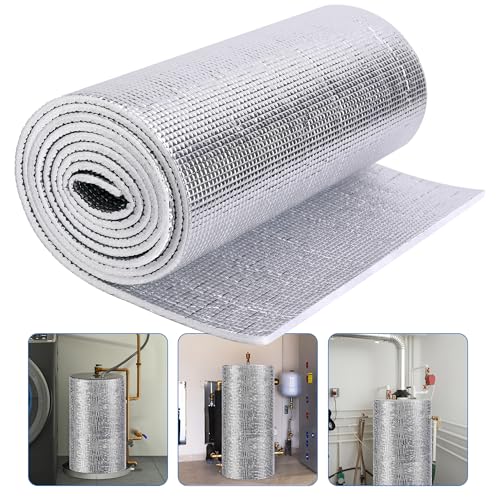I will be glad to try. It has taken a lifetime to learn these things and it is not an easy or short explanation, but I will try to condense.
In the beginning....Lol!! No really we started years ago with air over water type pressure tanks I call Hydro for short. These systems effectively use two check valves to add air to the pressure tank on each pump start. The check valve down on the pump keeps the entire column of water from draining back. The check valve or (control check) before the tank was used to take pressure off a bleeder orifice about 5' down the well, while a Schrader valve without a cap, attached to the inlet of the control check let air draw in as the bleeder drained the top 5' of pipe. When the pump starts the 5' slug of air is pushed into the tank. An AVC lets excess air out of the tank, and a proper air level is maintained. These days Hydro tanks are only used in areas with Iron or Sulfur in the water as a way to aerate the water and drop Iron and sulfur out of solution. Hydro tanks systems are the only type system that needs more than 1 check valve. However, as a carryover from the old days people just think it normal to have a second check valve before the tank.
With a Hydro tank there is 5' of air in the pipe prior to the second check valve, which cushions the impact of the slug of water coming up the well rapidly when the pump starts. With a bladder or diaphragm tank there is no bleeder, and no air in the pipe before a second check valve. It doesn't matter if the second check valve is prior to the tank or in the well every 100' or so. When the pump shuts off the slug of water below the upper check valve will settle and become depressurized. Taking this pressure off the lower check can cause it to lose its seal or leak back slightly. When this happens the upper check valve is holding the water in the drop pipe like putting your thumb over a straw full of ice tea. Even if both checks are working properly the slug of water between them becomes unpressurized. Then "creep" causes the lower check to loose a little water, and the slug of water between the checks is now held at a vacuum.
When the pump is called to start and sees a vacuum in the line, it starts at max flow with no head against it. It only has to pump a thimble full of water to change the vacuum to pressure in the drop pipe. This slug of water between the two check valves, which could be 100' or 600' long, slams into the upper check valve with tremendous velocity and weight. The water on the tank side of the second check valve gets hit like a boxer hitting someone in the nose as hard as he can. The resulting water hammer may only make a slight "thump" noise, but is damaging everything in the system from the faucet you just turned on to the thrust bearing at the bottom of the motor in the well.
So called "normal cycling" that happens with hydro, bladder, or diaphragm tanks is hard on check valves. Pressure tank systems are designed to cycle less than 300 or 100 times a day. Each time the pump cycles the check valve is thrown wide open, then slammed shut from the wide open position. Slamming shut multiple times damages check valves. For this reason many installers install additional check valves simply for redundancy. Having a redundant check valve could keep the pump from cycling on and off if the main check valve fails. But redundant check valves can also be part of the cause of check valve failures.
If I was not using a Cycle Stop Valve and just had a pressure tank cycling the pump on/off all day and slamming the check valve from full flow to closed, I would also use a redundant check valve. However I would put the second check valve 3"-6" above the one on the pump. This gives redundancy without a big slug of water between two check valves being used as a projectile further up.
Nearly every component in a pump system is eventually destroyed by cycling, including the check valve. A check valve is only used when the pump shuts off. If a Cycle Stop Valve is added and the pump does not cycle on/off, the check valve is not even being used. Then when the pump does need to shut off, the CSV has reduced the fill rate of the tank to 1 GPM. At 1 GPM the check valve is not wide open, but only open the thickness of a piece of paper when the pump shuts off. Using a Cycle Stop Valve to keep the check valve from slamming prevents check valve failures and any need for redundancy.
But even with a Cycle Stop Valve, check valves are not made like they were in the past. So, adding a second check valve 3" from the pump could give you peace of mind that the scenario you described will not happen again. You got out lucky with the 40 bucks a month on the electric bill as that scenario usually breaks a pump shaft as well.

























































